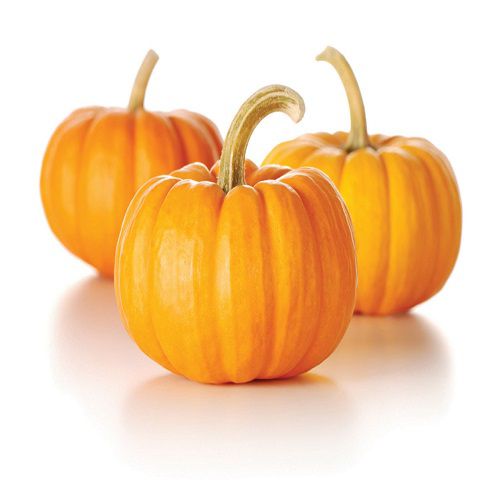Halloween is getting closer and closer, and our Food today is one of the main protagonists of the celebration. Who has not ever sculpted a dark pumpkin? Well, you should know that this not only perfectly sets a terrifying night but is a true gift to our health. In addition, it is so delicious that it is suitable for a multitude of recipes of all kinds. Do you want to discover the properties and benefits of Pumpkin? Take note!
With the arrival of autumn, we find in our markets a great variety of delicious pumpkins. This Food creates a lot of confusion as to whether it is appropriate for fat loss-oriented plans. And it is necessary to recognize that its characteristic sweet flavor and texture make one doubt and believe that it can be highly caloric. Is sweet and delicious Pumpkin healthy and adequate? The truth is that yes … Also for weight loss diets!
Pumpkin properties
Among the benefits and properties of Pumpkin, we find some that may surprise you. And it is that its caloric intake is deficient, around 32 kcal per 100 g of edible portion. Likewise, it provides very few carbohydrates (5.6 g per 100 edible g). Pumpkin is rich in potassium and a source of calcium, phosphorus, and vitamin C and A. Its orange color is due to carotenoids, which give it a high antioxidant power.
In addition to eating the pulp, the fleshy part, its seeds are also used, the well-known pumpkin seeds. These are a source of vitamins and essential omega-three fatty acids. As you can see, it is a food full of benefits that contribute to the proper functioning of the body and that, in addition, is a gift for the palate. We already anticipated that it is very versatile and suitable for a multitude of recipes. We can make a puree together with other vegetables, eat it roasted in the oven or stuffed, in a stew with legumes, or making the famous angel hair in pastries. Our dishes’ whole, healthy resources will give them a characteristic texture, flavor, color, and aroma.
Pumpkin benefits
The benefits of Pumpkin for our health and well-being are immense and very varied. This is very digestive, strengthens the immune system, and contributes to optimal cardiovascular health. It also favors the respiratory system, eye health, and the nervous system, reducing symptoms related to depression, insomnia, or anxiety. It is a treasure that prevents various diseases and that we should not overlook. Now that you know a little more about the properties and benefits of Pumpkin, don’t forget to include them in your diet!
Benefits of taking Pumpkin
Pumpkin is a vegetable closely associated with autumn for the celebration of Halloween, but it is not only an excellent decorative element but also a portion of good Food. This vegetable has its best harvest and consumption season between April and September, so it is consumed in both hot and cold foods.
What is Pumpkin, and what are its varieties
Pumpkin is the fruit of the pumpkin berry and belongs to the Cucurbit family. Although this squash plant is believed to have originated in Guatemala and Mexico, it is currently grown in hot, humid soils worldwide.
There are several varieties of Pumpkin, essentially classified into two types:
Summer squash: variety with light, thin skin and soft seeds. Its conservation period is short. Among the summer squash are:
- The bone tea (white, green, or yellow).
- The spaghetti (yellow).
- The rondín (orange with whitish flesh).
Winter squash: sweeter variety but drier than summer squash, with lower water content. Its skin is thicker, which allows it to be preserved for a longer time. This group includes the banana squash, the cider or squash (intense yellow color and gelatinous pulp), and the confectionery or angel hair (from which the angel hair used in pastry making is obtained).
To preserve the Pumpkin, it is preferable to do it at room temperature, out of the refrigerator. However, it can also be stored in the refrigerator wrapped in a perforated plastic bag. To make it last longer, there is also the option of freezing it, preferably after being cooked.
Pumpkin benefits
Pumpkin is a food that provides the body with an essential range of nutrients, vitamins, and minerals. Beta-carotene or provitamin A, vitamins C and E, and several vitamins of group B (B2, B6, and folic acid) stand out among these vitamins. Minerals include potassium, phosphorus, magnesium, iron, and zinc. For its part, the seeds of this Food contain a large amount of magnesium (necessary for the cardiovascular and nervous system) and zinc. It is also a low-calorie vegetable.
Taking Pumpkin is highly recommended during all stages of life, but especially in childhood, pregnancy and lactation. It is also a highly recommended food in case of diabetes since its sugars are slowly absorbed. Among other things, the Pumpkin:
Avoid hypertension: its vitamin C, fiber, and potassium support heart health.
Supports the immune system: vegetables with vitamin C and beta-carotene boost the immune system thanks to their nutrients.
It helps prevent fluid retention thanks to the high content of minerals such as potassium, which stimulates urine production. Thanks to this, many toxins stored in the body are also eliminated.
Take care of the eyes: vitamins C (antioxidant), E and beta-carotenes take care of eye health and prevent its degeneration.
It helps those who suffer from stomach problems such as gastritis, heartburn, heavy digestion, heartburn, or gastroduodenal ulcer.
Helps fertility: the consumption of iron from vegetables such as Pumpkin is very favorable among women of childbearing age. In addition, its beta-carotenes are also essential during pregnancy and lactation.
Helps against cancer, especially prostate and colon cancer.
It can be used to lose weight due to its low energy intake and great nutritional wealth. Its fiber absorbs water and allows you to be easily satisfied.
How to take Pumpkin
Pumpkin can be eaten cooked, fried, sautéed, or baked. Cold is mainly used to add it to a salad or sandwich, but the most common is to cook it and eat it hot, for example in the form of cream or puree, roasted, stuffed with rice, in stews, soups … Pumpkin can also be consumed sweet, incorporating it as an ingredient in pancakes, cakes or cakes.





